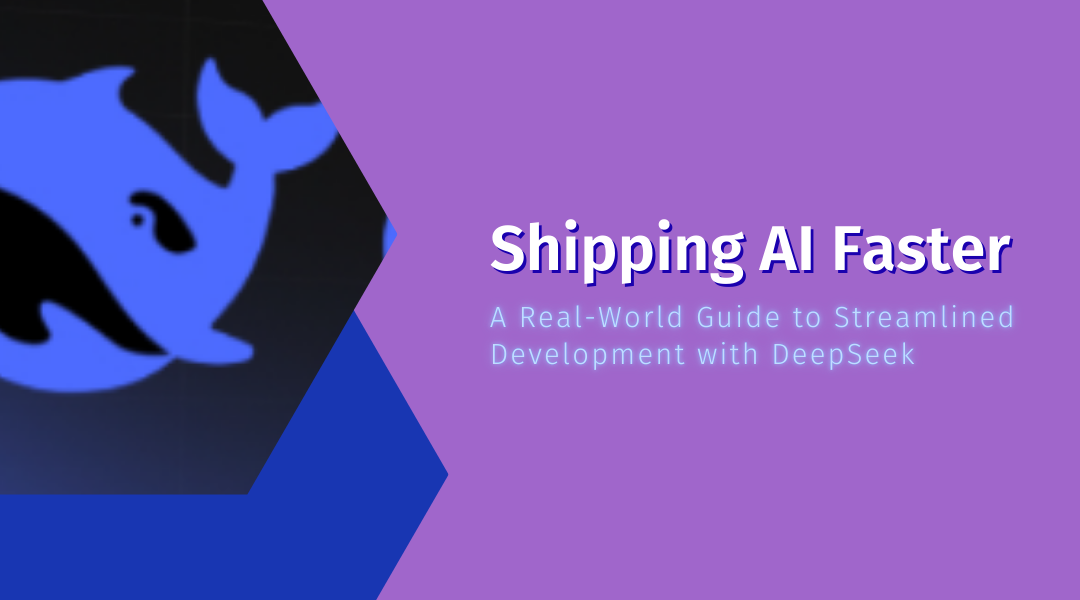Let’s be honest: building AI is one thing—shipping it is another. Between endless experiments, deployment headaches, and integrating with live systems, it’s easy for projects to stall. But it doesn’t have to be that way.
DeepSeek AI is built not just for training models, but for getting them into production—quickly, reliably, and at scale. Here’s how to make it work for you.
Deploy Without Drama
You’ve trained a great model. Now, how do you get it off your laptop and into the hands of users? Deployment is where many projects falter, but it doesn’t have to.
- Containers Are Your Best Friend:
Package your model, its dependencies, and even the right version of Python into a Docker container. This ensures it runs the same way on your machine, in testing, and in production.
dockerfile
# Example Dockerfile for a DeepSeek model server
FROM python:3.9-slim
COPY requirements.txt .
RUN pip install -r requirements.txt
COPY app.py model.pkl .
CMD [“gunicorn”, “-b”, “0.0.0.0:8080”, “app:app”]
- Serverless and Scalable:
No one wants to babysit servers. DeepSeek integrates seamlessly with serverless platforms like AWS Lambda or Google Cloud Run. You upload your model, define the trigger, and it scales to zero when not in use—so you only pay for what you compute. - Edge Deployment:
For low-latency applications (like real-time video analysis), deploy directly on edge devices. DeepSeek supports optimized model formats like ONNX or TFLite, so you can run complex models on a Raspberry Pi or mobile device.
Weave AI Into Your Workflow—Without Rewriting Everything
Most companies aren’t greenfield startups. You have existing systems, and AI needs to slot in—not take over.
- API-Led Integration:
Wrap your model in a clean, well-documented REST API. This allows any team in your company to consume AI capabilities without understanding the underlying complexity.
python
# Flask app snippet for model serving
from flask import Flask, request, jsonify
import joblib
app = Flask(__name__)
model = joblib.load(‘urgency_classifier.pkl’)
@app.route(‘/predict’, methods=[‘POST’])
def predict():
data = request.json
prediction = model.predict([data[‘text’]])
return jsonify({‘urgency’: prediction[0]})
- Plug into Your Data Stack:
DeepSeek connectors let you pull live data from Snowflake, BigQuery, or even real-time Kafka streams. Your model isn’t stuck in a notebook—it’s part of the data pipeline. - Low-Code Integration Points:
For business teams using tools like Zapier or Airtable, you can expose model predictions as automated steps in their workflows. No engineering ticket required.
Optimize for Performance—and Reality
A fast model isn’t just about accuracy. It’s about latency, cost, and maintainability.
- Hyperparameter Tuning—Automated:
Don’t waste weeks manually tweaking parameters. Use DeepSeek’s built-in tuner, which runs distributed experiments across hundreds of configurations and surfaces the best performer.
python
from deepseek.tune import HyperOptimizer
tuner = HyperOptimizer(
model=my_model,
param_grid={
‘learning_rate’: [1e-4, 3e-4, 1e-3],
‘batch_size’: [16, 32, 64]
},
objective=’accuracy’
)
best_config = tuner.fit(train_data, val_data)
- Data Curation Over Quantity:
More data isn’t always better—better data is. Use DeepSeek’s data quality scorers to identify mislabeled examples, duplicates, or non-representative samples. Clean data beats big data every time. - Regularization That Actually Works:
Avoid overfitting with techniques like dropout, early stopping, and L1/L2 regularization—but apply them intelligently. DeepSeek’s training dashboard visualizes training/validation loss in real time, so you can cut off training the moment the model starts memorizing instead of learning.
Leverage DeepSeek’s Hidden Gems
The platform packs powerful features that go beyond typical MLOps tools.
- AutoML for Rapid Prototyping:
Need a baseline model in minutes, not days? DeepSeek’s AutoML can automatically preprocess data, test multiple architectures, and return a deployable model—perfect for validating ideas before investing heavily. - Explainability Built-In:
When your model says “high risk,” you need to know why. Integrated SHAP and LIME visualizations help you—and your stakeholders—understand the reasoning behind predictions, building crucial trust. - Continuous Evaluation:
Set up automated canary deployments that send a fraction of live traffic to your new model while comparing its performance against the current version. Roll forward confidently—or roll back automatically if metrics dip.
Conclusion: Build Fast, but Build to Last
Speed in AI development isn’t about cutting corners—it’s about cutting waste. It’s about spending your time on what matters: solving business problems, not debugging environment mismatches or manually tuning knobs.
DeepSeek AI is built to support that entire journey—from the first line of code to the thousandth prediction per second. By embracing modern deployment practices, thoughtful integration, and relentless optimization, you’re not just shipping models faster.
You’re building systems that learn, adapt, and deliver—long after the initial hype has faded.
